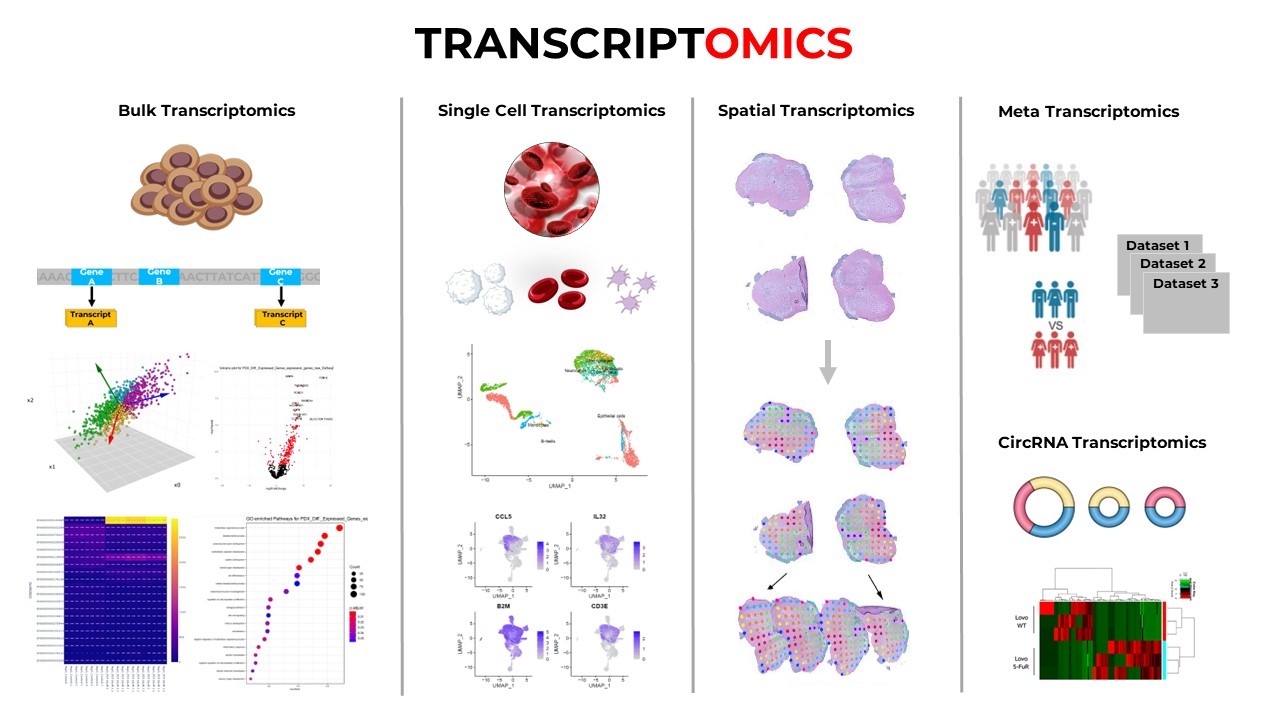
In this article, we will explore the diverse landscape of
transcriptomic studies, provide real-world case study examples, and offer
valuable resources to delve into each type.
TYPES OF TRANSCRIPTOMIC STUDIES
Bulk Transcriptomics:
Bulk transcriptomics is a method that examines the
collective gene expression within a population of cells or tissues. Researchers
use this technique to gain insights into the average gene expression patterns
across a sample. For instance, a study employing bulk RNA-Seq might investigate
how gene expression changes in cancer cells compared to their normal
counterparts. This approach provides a holistic view of gene activity within a
given sample.
For those eager to explore bulk transcriptomics, there are
invaluable resources available. The "RNA-Seqlopedia" by Illumina
serves as a comprehensive guide, offering insights into best practices and data
analysis. Additionally, platforms like Coursera and edX provide specialized
courses that delve into the intricacies of bulk transcriptomic analysis,
equipping learners with the skills needed to harness the power of this
technique.
Single-Cell Transcriptomics:
Single-cell transcriptomics is a cutting-edge approach that
enables researchers to scrutinize gene expression profiles at the individual
cell level within a heterogeneous population. This revolutionary method has
transformed our understanding of cellular diversity and function. For example,
a study employing single-cell RNA-Seq might uncover various neuronal subtypes
in the brain, shedding light on the intricacies of neural networks.
If you're intrigued by the potential of single-cell
transcriptomics, you can explore courses like "Single-Cell RNA
Sequencing" on Coursera or delve into research publications in journals
like Nature Methods. These resources provide the foundation for mastering the
techniques necessary to dissect the complexities of individual cells within a
biological system.
Spatial Transcriptomics:
Spatial transcriptomics merges the realms of genomics and
spatial information, allowing researchers to map gene expression patterns
within tissues or organisms. This innovative technique offers insights into the
spatial organization of cells and their interactions. For instance, a study
employing spatial transcriptomics might seek to understand gene expression
patterns in a developing embryo, providing a spatial context for developmental
processes.
To embark on your journey into spatial transcriptomics, you
can explore resources such as the "10x Genomics Spatial Transcriptomics
Whitepaper." Additionally, platforms like Illumina's iCommunity offer
courses and materials to guide you in unraveling the spatial mysteries of gene
expression within biological systems.
Metatranscriptomics:
Metatranscriptomics takes a unique approach by studying all
transcripts within a microbial community. This method unravels the functional
roles of different microbial species, shedding light on the complexities of
microbial ecosystems. For example, a metatranscriptomic study might explore how
various microbial species in the human gut microbiome contribute to overall gut
health.
For those intrigued by metatranscriptomics, valuable
resources can be found on platforms like the Joint Genome Institute (JGI) and
the European Bioinformatics Institute (EBI). These resources provide the tools
and knowledge necessary to dive into the world of metatranscriptomics and
understand microbial communities at a transcriptomic level.
CircRNA Transcriptomics:
Circular RNAs (circRNAs) are a unique class of non-coding
RNAs with regulatory potential. CircRNA transcriptomics focuses on these
intriguing molecules, investigating their expression and functions. For
instance, a study might delve into the roles of circRNAs in cardiovascular
diseases, aiming to unravel their impact on health and disease.
If circRNA transcriptomics piques your interest, keep an eye
out for research papers and publications related to circRNAs. Additionally,
specialized courses like "Circular RNA in Human Health and Disease"
on edX provide in-depth knowledge and skills to explore the fascinating world
of circRNA transcriptomics.
In conclusion, the realm of transcriptomics offers a diverse
array of approaches, each unveiling unique insights into gene expression and
regulation. Whether you're drawn to bulk transcriptomics, single-cell
transcriptomics, spatial transcriptomics, metatranscriptomics, or circRNA
transcriptomics, there are abundant resources available to support your journey
into these specialised fields. These resources will equip you with the
knowledge and skills needed to make significant contributions to our understanding
of biology, diseases, and beyond.
Transcriptomic studies come in various flavours, each
offering a unique perspective on gene expression and regulation. From bulk
transcriptomics that provides a global view of tissues to single-cell studies
uncovering cellular diversity, and spatial transcriptomics adding spatial
context, to metatranscriptomics unveiling microbial mysteries, and circRNA
transcriptomics exploring regulatory RNA molecules, there's a wealth of
knowledge to explore.
To embark on your journey into the world of transcriptomics,
you can leverage the resources mentioned for each type of study. Whether you're
a researcher, a student, or simply curious about this field, these resources
will help you dive deeper into transcriptomics and its manifold applications in
understanding biology, disease, and beyond. As the field continues to evolve,
your exploration of these studies will contribute to the advancement of
genomics and our understanding of the molecular intricacies of life.







